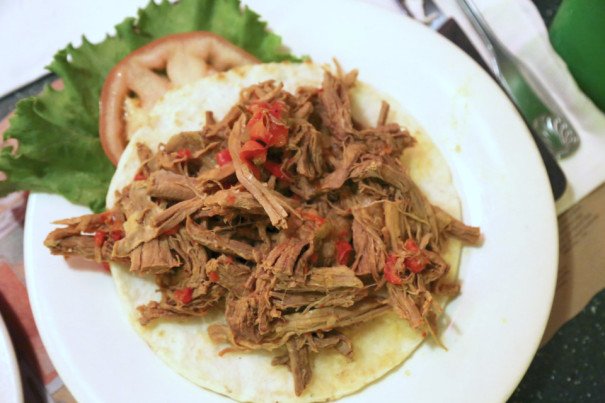
The Many Meanings of Arepas
In Colombia, arepa means three things: as slang, it means both “vagina” and “good luck”; but, literally, it describes one of the most important things you could eat in the country, and I’m here to brief you on its glory.
An arepa is a flat disc made from corn flour. If you are not versed in the magical world of the arepa, that might sound to you like a common Mexican tortilla, yet it couldn’t be further from the truth. Tortillas are flimsy and meant to cradle other foods; arepas are sturdy and they can hold on their own without any accompaniment. They come in many sizes, from smaller than a coaster for your espresso to larger than a plate for your steak dinner. You can grill, bake, fry, boil or steam them.
The greatest thing about arepas is that their ingredients and preparations are so simple. This means they’re malleable, and anybody can give you their opinion on what a “proper” arepa is. Here’s my dream arepa: plain, thin, grilled until a few black burn-lines zebra its surface, then slathered with melted butter and scattered with salt.
My dad’s family, from the Tolima region in central Colombia, believes that the best arepas are small, thick and fried. Most people in the Colombian Caribbean coast would argue that the best arepas are prepared by frying them a little, then inserting an egg, sealing the arepa again, and deep-frying them until the egg is cooked inside. My city, Bogotá, leans more towards arepas which are grilled until the cheese sealed inside the dough melts, effectively gluing the dish shut. Some prefer their arepas yellow (made from sweet corn and called arepas de chócolo), while some prefer them white. Some enjoy prefer them without any toppings or fillings, while others bake them with shredded beef, or fried pork skin inside.
Colombia is a divided country: each region believes it has a distinct (and in most cases, superior) culture and identity. But all of the country agrees on the beauty of arepas. And, thanks to how easy it is to get or make them, they are ubiquitous in Colombian breakfasts (and lunches, and dinners, and food carts that tend to drunkards leaving the party). They are everywhere, but they adapt. They can be both symbols of regional differences and of national understanding.
They are Colombia’s national dish, one of its uniting forces, even though everybody in Venezuela reading this little article right now might be very well preparing to write a fiery rebuttal, arguing that arepas are and have always been the most Venezuelan thing ever. Fair enough, I’m sure we can overcome this. I’m convinced that arepas are delicious enough to help us overlook international boundaries and personal differences.